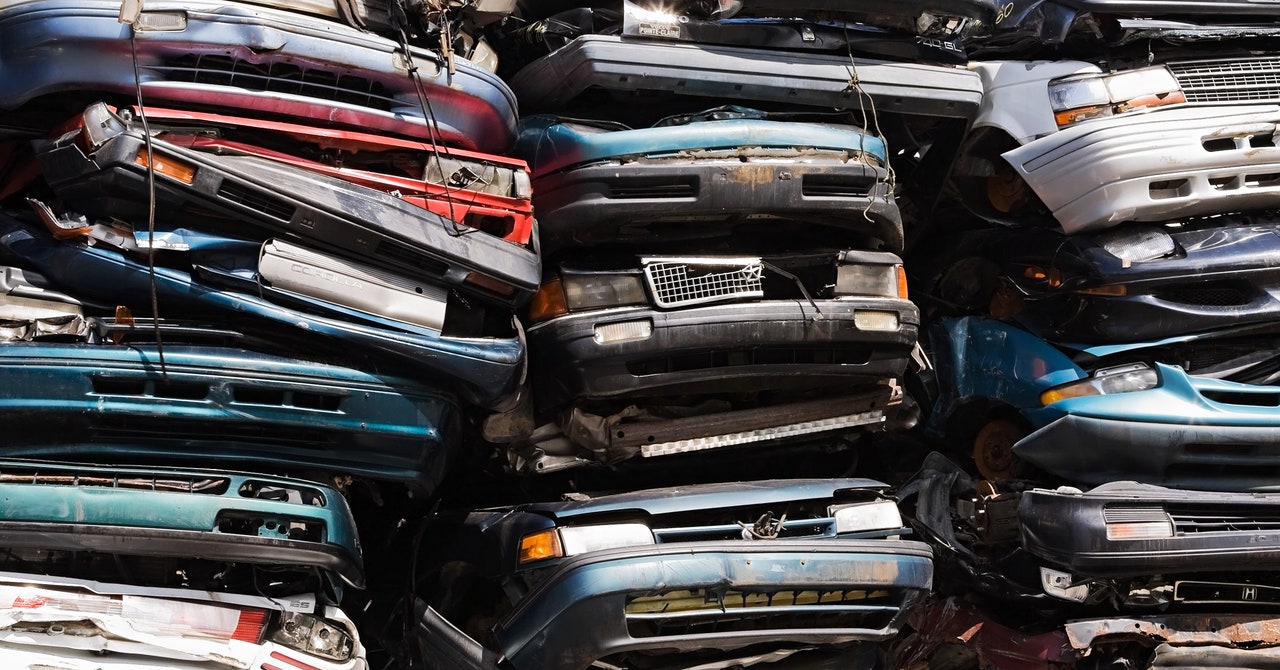With every passing year on year, car emissions continue to rise. Global CO2 emissions from passenger cars amounted to 2.5 gigatons in 2000. In 2018, the most recent year for which data is available, that had increased to 3.6 gigatons. The reason? People keep buying gas guzzlers. About 15 million new vehicles were sold in the United States in 2021, an increase of 2.5 percent from an unusually low number in 2020. In the UK, 1.65 million new vehicles rolled off dealer lots. The good news? Some people are trading their fossil fuel vehicles for cleaner alternatives. Nearly half a million Americans bought an all-electric vehicle (EV) last year, while nearly 750,000 EVs were sold in the UK. And last year, electric vehicles accounted for 8.3 percent of new light vehicle sales worldwide. But trading in a Toyota Corolla for a Toyota Prius isn’t the full story, especially because that Corolla doesn’t just disappear.
While some old combustion-engined vehicles are sent to car dismantling companies that break them down safely, many don’t. That traded-in Corolla will likely be put on a freighter and moved further up the value chain. “It depends on where you are in the world where your used cars go,” said Sheila Watson, deputy director for environment and research at the FIA Foundation, a non-profit organization that campaigns to improve air quality. The old vehicles from Western Europe are generally packed and shipped to Eastern Europe. When they have reached the end of their lifespan there, but are still roadworthy, they go south to Africa. North America’s junk cars drive south to developing countries in South America; Asia’s vehicles are shipped across the continent until they are deemed unpalatable to consumers there, and then they go to Africa.
Between 2015 and 2020, consumers around the world bought 10.2 million electric vehicles. But in the same period, 23 million used light-duty vehicles (LDVs) – cars, vans, SUVs and pickup trucks – were exported. According to the United Nations Environment Program (UNEP), two-thirds go to developing countries. And when they arrive on the other side of the world, they continue to pollute.
It’s an age-old principle: out of sight, out of mind. The planet just doesn’t work like that. “The whole world has to move somehow,” Watson says. In London, the dirtiest vehicles have now been banned from the vast majority of the city’s roads. Successive city councils in Amsterdam have pushed cars out of the city center, making the center of the Dutch capital a haven for cyclists and pedestrians. Oslo plans to ban all fossil fuel-powered vehicles from city limits by 2026. But almost as quickly as these polluting vehicles disappear from one city, they appear in another.
The shift towards clean air policies is also unevenly distributed across the global north. For every Oslo or London, there are other cities in Europe and North America building new roads and filling them with polluting vehicles. Ferdinand Dudenhöffer, director of the Center for Automotive Research in Duisburg, Germany, believes the fixation on third- or fourth-hand vehicle imports into the developing world may be a distraction from the leading cause of vehicle pollution: 90 percent of the cars worldwide has been sold in Canada, China, Europe and the United States.
But as electric vehicle sales increase in wealthier countries, there is a risk that even more polluting cars will find their way to the developing world. Africa already receives one in four used LDVs from the global supply – between 2015 and 2020, the continent imported a total of about 5.5 million used vehicles. “There are a lot of really cheap cars out there,” Dudenhöffer says, and many have had three or four owners in their lifetime. Of the 146 developing countries UNEP surveyed in 2020, only 18 had banned the import of used vehicles. Only 47 countries had policies that were “good” or “very good” for used truck imports, according to UNEP. That has since improved, with a November 2021 update showing that 62 countries had good or very good policies. In part, this is due to legislative changes: in January 2021, 15 countries in the Economic Community of West African States introduced a directive requiring all imported vehicles to meet the equivalent of Euro 4/IV emissions standards. This limited the pollution level of vehicles sold after 2005, and no vehicles older than 10 years were allowed in the countries.

